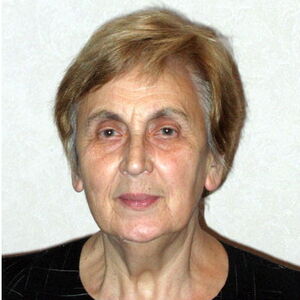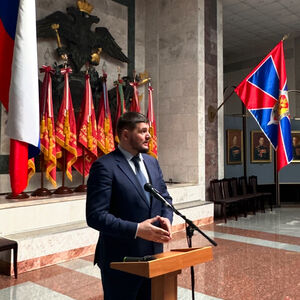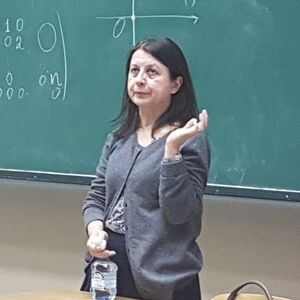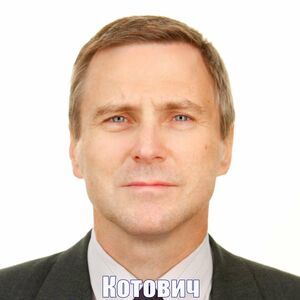Текст ВКР (1194537), страница 8
Текст из файла (страница 8)
СПИСОК ИСПОЛЬЗУЕМЫХ ИСТОЧНИКОВ
1. Федеральный закон от 18.07.2006 г. № 109-ФЗ «О миграционном учете иностранных граждан и лиц без гражданства в Российской Федерации»
2. Фахрутдинова, Е.В. Качество жизни населения: теоретический аспект [Текст] / Е.В. Фахрутдинова // Экономические науки. – 2009. – № 10 (59). – С. 130-133;
2. Балашова, Т.Н. Миграция и демография как неотложные направления развития приоритетных национальных проектов [Текст] / Т.Н. Балашова // Миграционное право. - 2007. - №1. - С. 19-21;
3. Барковский, А.Ф. Привлечение в Россию иностранных трудовых мигрантов: необходимость селективного подхода [Текст] / А. Ф. Барковский // Общество и экономика. – 2011. – № 1. – С. 111–128;
4. Бекяшев, Д.К. Международно-правовое регулирование вынужденной и трудовой миграции [Текст] / Д.К. Бекяшев, Д.В. Иванов. – М.: Изд-во Проспект, 2015. – 392 с.;
5. Блинова, М.С. Современные социологические теории миграции населения [Текст] / М.С. Блинова. – М.: Изд-во КДУ, 2009. – 160 с.;
6. Блинова, М.С. Социология миграции: история становления и перспективы развития [Текст] / М.С. Блинова. – М.: Изд- во КДУ, 2009. – 192 с.;
7. Вашко, И.М. Государственная политика регулирования трудовой миграции: зарубежный опыт и возможности его использования в Республике Беларусь [Текст] / И.М. Вашко // Журнал международного права и международных отношений. – 2012. – № 1. – Режим доступа: http://evolutio.info /content/view/1939/235/
8. Волох, В. П. Проблемы и перспективы формирования миграционной политики в условиях перехода к инновационной экономике [Текст] / В. П. Волох // Власть. – 2011. – № 3. – С. 4–6;
9. Западнюк, Е.А. Интеллектуальная миграция и ее влияние на экономику страны: проблемы государственного регулирования [Текст] / Е.В. Западнюк // Экономические науки. – 2007. – № 30. – С. 295-299;
10. Зайончковская, Ж.А. Трудовая миграция в СНГ с позиций общества, семьи и личности [Текст] / Ж.А. Зайончковская // Миграция населения. - Вып. 2: Трудовая миграция в России. Приложение к журналу «Миграция в России» / под общ. ред. О.Д. Воробьёвой. - М., 2007. - С. 3 - 27;
11. Кирпичев, В. В. Трансграничные миграции населения как источник воспроизводства трудовых ресурсов и фактор накопления человеческого капитала [Текст] / В. В. Кирпичев // Нац. интересы: приоритеты и безопасность. – 2010. – № 30. – С. 10–14;
12. Королева, С.А. Зарубежный опыт регулирования международной миграции рабочей силы: возможности применения в России: автореф. дис. канд. экон. наук [Текст] / С.А. Королева. – М., 2005. – 28 с.;
13. Куценко, Т.И. Нелегальная миграция и незаконная занятость иностранных граждан и лиц без гражданства в РФ [Текст] / Нелегальная иммиграция // Научная серия: Международная миграция населения: Россия и современный мир. - 2009. - №9. - С. 78;
14. Мишунина, А. А. Системный подход к государственному регулированию миграционных процессов в Российской Федерации [Текст] / А. А. Мишунина // Журн. рос. права. – 2010. – № 8. – С. 33–41;
15. Моисеенко, В.М. Снижение масштабов внутренней миграции населения России: опыт оценки динамики по данным текущего учета [Текст] / В.М. Моисеенко // Вопросы статистики. - 2004. - №7 - С. 47-56;
16. Мукомель, В. И. Интеграция мигрантов: вызовы, политика, социальные практики [Текст] / В. И. Мукомель // Мир России. – 2011. – № 1. – С. 34–50;
17. Некипелов, А.Д. Уровень общественного благосостояния: подходы к оценке [Текст] / А.Д. Некипелов // Российский экономический журнал. - 2010. - №7 - С. 37;
18. Попов, А.Д Неформальный сектор в аспекте затрат труда в экономике России [Текст] / А.Д. Попов // Вопросы статистики. - 2005. - №7 - С. 36;
19. Попов, А.Д. Иностранная рабочая сила в экономике России [Текст] / А.Д. Попов // Международная научно практическая конференция «Миграция населения и перспективы демографического развития России». - М., 2006. - 146 с.;
20. Римашевская, Н.М. Человеческий потенциал России и проблемы «сбережения населения» [Текст] / Н.М. Римашевская // Российский экономический журнал. - 2006. - №9-10 - С. 22;
21. Регент, Т.М. Миграция в России. Проблемы государственного регулирования [Текст] / Т.М. Регент – М., 2009;
22. Роик, В. Старение населения - глобальный вызов XXI века и адекватные ответы [Текст] / В. Роик // Человек и труд. - 2006. - №2 - С. 33;
23. Тандонне, M. Иммиграционная политика во Франции и проблема нелегальной миграции [Текст] / М. Тандонне // Иммиграционная политика западных стран: Альтернативы для России / Под ред. Г. Витковской. М.: Гендальф, 2002. - С. 206-215;
24. Цапенко, И.П. Международная миграция ученых и студентов: возможности государственного управления [Текст] / И.П. Цапенко // Вопросы государственного управления. – 2007. – Том II. – № 2-3. – С. 37-58;
25. Цапенко, И.П. Управление миграцией: опыт развитых стран. [Текст] / И.П. Цапенко. – М.: Изд-во Academia, 2009. – 384 с.;
26. Цапенко, И.П. Интеллектуальная миграция в развитых странах [Текст] / И.П. Цапенко // Научная политика и проблемы развития науки. – 2010. – С. 126-150;
27. Юдина, Т.Н. Миграция. Словарь основных терминов [Текст] / Т.Н. Юдина. – М.: Изд-во РГСУ, 2007. – 480 с.;
ПРИЛОЖЕНИЕ 1
МЕЖДУНАРОДНАЯ ТРУДОВАЯ МИГРАЦИЯ КАК ФАКТОР СОЦИАЛЬНО-ЭКОНОМИЧЕСКОГО РАЗВИТИЯ
Студент гр. Ц45 ____________ А. А. Болгов
Консультант ____________ Н. А. Чэ
1. Theoretical basis of the research into the labor migration
1.1 Essence and types of the international labor migration
The word ‘migration’ has appeared as a derivative of Latin "migrare" which means "to pass" or "to move". It is commonly used as a collective term. This term describes a complex social phenomenon connected with spatial movement of people, its consequences, and factors causing it. The territories on which migration occurs are divided into giving and accepting population or, in other words, into the places of departure and arrival, leaving and settlement of migrants.
So far, there is no uniform definition of the population migration. Also, the natural movement is interpreted differently by certain scientists and scholar schools. One of them refer all movements of the population to migration even if it was moving from one apartment to another within the city, or visit to a theater.
Others refer to the ‘migration’ a person’s movement in a certain area or outside it, continuous and temporary movement of people in space and in the same human settlement.
In a broader sense, the concept ‘migration’ refers to the variety of the spatial movement of the population irrespective of its character and purposes. Business trips, vacation trips, and regular departures for work or study outside the places of residence, arrival at some area for temporary or seasonal jobs, moving from one settlements to others, etc. are ranked as such movements. The above-listed types of people’s movements (temporary and constant) between the territories and settlements refer to incidental, pull and push, seasonal, and irrevocable migration. In some cases, one of them is evolved into others; the temporary migrations are often the predecessors of the constant ones, and the seasonal (temporary) migrations transform into irrevocable, etc. All of them are specific in character, and the population involved in them pursues the various aims.
The incidental migration is represented by business, recreational, and other trips that are made irregularly by time and are not necessarily in the same directions. They are considered to be the temporary and returnable migrations. If in business trips, only the able-bodied population takes part, in recreational trips, its other part can participate as well. This type of migration in Russia is insufficiently studied. However, there is a tendency when with increase in the population’s welfare the increase in the number of departures out of borders of the residence places for rest, treatment, and for other purposes is observed.
The push-pull migrations are daily or weekly trips of the population from residences to the places of work (study) located in different settlements and back. The push-pull labor migrations of the population from the neighboring countries through their borders are called the frontal lines.
The comparatively new subtypes of the push and pull migration can include labor activities that is executed by out by job sharing. In this case, the period of the pendular fluctuations of migratory processes makes a longer period determined by the running cycle. The purpose of such movements of the population is obtaining a higher income in the new place of work without changing the residence.
The seasonal migrations of the able-bodied population generally include the movements of the able-bodied population to the places of temporary job and residence for a period of several weeks or months with preserving the former constant place of residence. On the one hand, they provide for their participants a higher income than in the places of their permanent residence; and on the other hand, they satisfy the needs of production that has deficiency in labor. Such migrations are caused by the fact that in the economy of some areas, the dominant position belongs to the branches in which the labor requirements are unstable in time. As a result, during the seasons of the greatest amount of work, these branches of industry experience the exceeding need in labor.
The irrevocable (stationary, full, and final) migration or resettlement is the understanding of the concept ‘migration’ narrowly. There is no insuperable wall between this and other types of migration. This type of migration simultaneously meets the two conditions: first, the population moves from some settlements to others; second, the movements are followed by change of permanent residence. The first condition excludes from migrations all the possible movements of the population within the same settlements, and the second - returnable or short-term trips to other inhabited places.
The external and internal migrations are distinguished. In the external migration, the flows cross the borders of the countries or other subnational entities. The internal migrations refer to the movements of people that do not go outside the certain territories (settlements).
Workforce is the part of the population of the country that has physical growth and development, mental capacities, and knowledge required for engaging in the socially useful work.
The amount of the workforce depends on the population size, the condition of its reproduction, and structure on gender and age.
The main part of the workforce of the country consists of its population at working-age as well as the teenagers, and persons of retirement age who are capable of working.
Migration of the workforce is the spatial movement of the able-bodied population caused by the changes in development and placement of production, and the conditions for the workforce existence.
The international movement of the workforce undergoes the 4 basic stages in its development:
The first stage is directly connected with the Industrial Revolution which took place in Europe in the late 18th century - the middle of the 19th century. The consequence of that Revolution consisted in the fact that accumulation of the capital was followed by growth of its organic structure. The latter had led to the "relative overpopulation" that caused the mass emigration from Europe to North America, Australia, and New Zealand. It had laid the foundation for forming the labor world market.
The labor world market contributed to:
• economic development in the countries of immigration as it satisfied the sharp need of these countries in the workforce, in the conditions of high rates of the capital accumulation and absence of the reserves for attracting the labor force;
• colonization of the low-populated areas of land and drawing the new countries into the system of the world economy .
The second stage covers the period from the 80-s of the 19th century before World War I. During that period, the scales of accumulating the capital highly raised which was characterized by strengthening the unevenness of this process within the world economy. The high level of production and capital concentration in the advanced countries (the USA, Great Britain, etc.) causes the increased demand for additional labor, stimulates immigration from less developed countries (the backward countries of Europe, India, China, etc.). Under these conditions, the structure and qualification structure of migrants changed. At the beginning of the 20th century, the bulk of migrants were made by the unskilled laborforce.
















